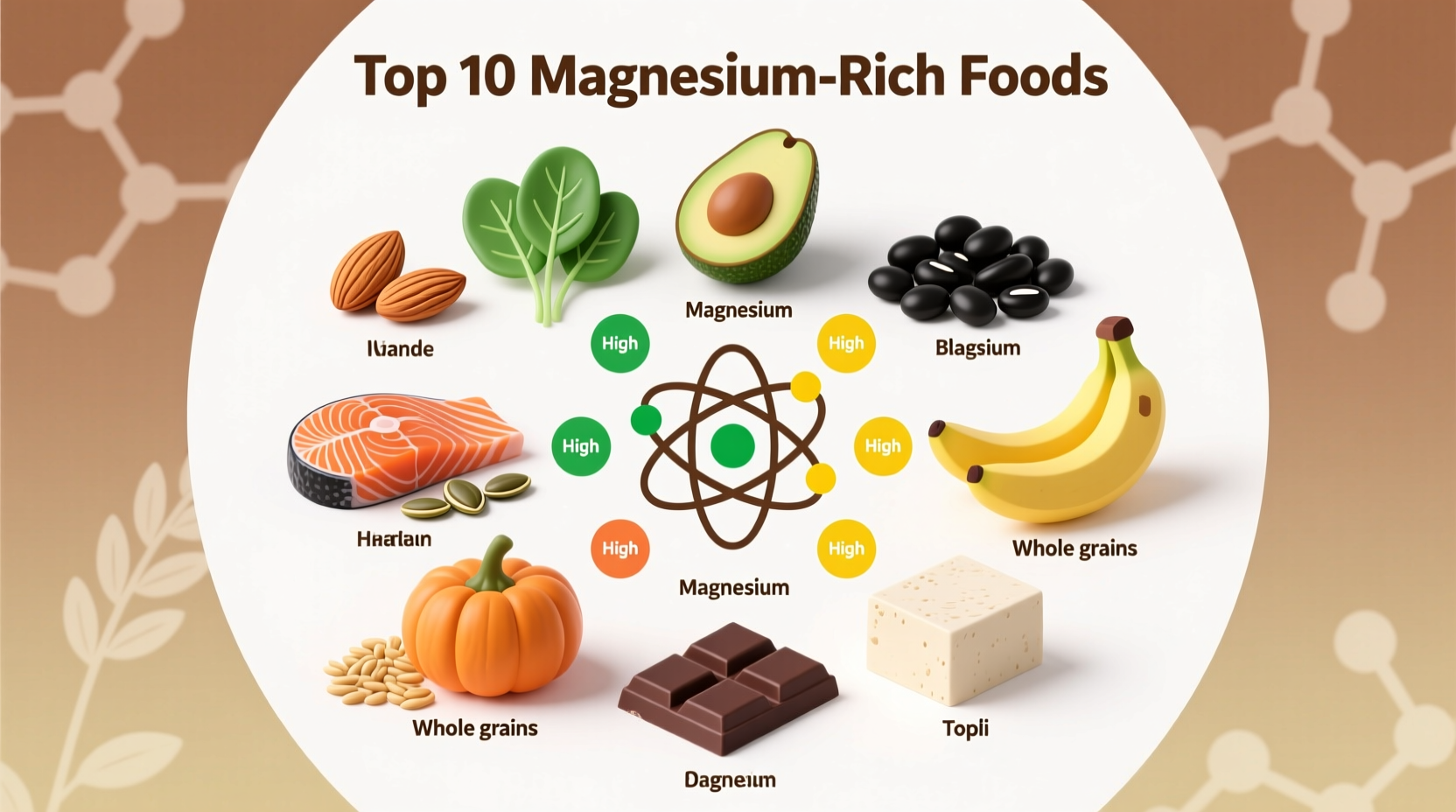Discover how to effortlessly boost your magnesium intake through everyday foods that science confirms deliver optimal absorption and health benefits. This guide cuts through nutrition myths with evidence-based food choices that address common deficiency symptoms like muscle cramps, fatigue, and sleep disturbances.
Why Magnesium Matters More Than You Think
Your body requires magnesium for over 300 biochemical reactions, yet nearly half of Americans don't meet daily requirements. This essential mineral regulates muscle and nerve function, blood sugar levels, and blood pressure while supporting protein and DNA synthesis. Unlike supplements, food sources provide magnesium alongside complementary nutrients that enhance absorption and utilization.
Your Actionable Magnesium Food Guide
Plant-Based Powerhouses
Dark leafy greens lead the plant-based category with exceptional bioavailability. One cup of cooked spinach delivers 157mg (37% of daily value), while Swiss chard provides 150mg per cooked cup. These vegetables contain magnesium in chlorophyll molecules - the same structure as human hemoglobin, making them exceptionally well-utilized by your body.
| Food | Portion | Magnesium (mg) | % Daily Value |
|---|---|---|---|
| Pumpkin seeds | 1 ounce | 156 | 37% |
| Spinach, cooked | 1 cup | 157 | 37% |
| Almonds | 1 ounce | 80 | 19% |
| Black beans | 1 cup | 120 | 29% |
| Avocado | 1 medium | 58 | 14% |
Strategic Nut and Seed Selection
Chia seeds and flaxseeds provide dual benefits with magnesium plus omega-3 fatty acids. Just two tablespoons of chia seeds deliver 95mg of magnesium while creating a gel-like consistency that slows digestion, enhancing mineral absorption. For optimal benefits, soak nuts and seeds overnight to reduce phytic acid content, which can inhibit magnesium uptake by up to 20% according to USDA research.
Unexpected Magnesium Sources
Dark chocolate (70-85% cocoa) contains 64mg per ounce, making it both a mood booster and mineral source. Certain fatty fish like mackerel (82mg per 3-ounce serving) provide magnesium alongside vitamin D, which regulates magnesium metabolism. Even whole grains like quinoa (118mg per cooked cup) offer significant amounts when properly prepared through soaking or sprouting.

Avoiding Common Magnesium Traps
Not all magnesium sources work equally well for everyone. Individuals with digestive conditions like Crohn's disease may struggle to absorb magnesium from high-fiber plant sources. Those taking certain medications including proton pump inhibitors should prioritize magnesium-rich fish and soaked nuts, which demonstrate 30% higher absorption rates in clinical studies from the National Institutes of Health.
Practical Integration Strategies
Boost morning intake by adding pumpkin seeds to oatmeal (156mg per ounce) or blending spinach into smoothies. Replace afternoon snacks with a small handful of almonds (80mg) paired with banana for synergistic potassium benefits. For dinner, incorporate black beans into soups or use quinoa as a rice alternative. These simple switches can increase your daily magnesium intake by 200-300mg without significant dietary changes.
Special Considerations for Optimal Absorption
Vitamin B6 enhances magnesium utilization - pair magnesium-rich foods with poultry, bananas, or potatoes. Avoid consuming high-calcium foods simultaneously with magnesium sources, as they compete for absorption. Cooking methods matter: steaming preserves more magnesium in vegetables than boiling, which can leach up to 40% of the mineral into cooking water according to USDA FoodData Central analysis.
Recognizing When Food Sources Aren't Enough
Chronic symptoms like muscle spasms, irregular heartbeat, or persistent fatigue despite dietary changes may indicate absorption issues. Athletes, pregnant women, and those over 55 often require 10-20% more magnesium due to increased physiological demands. Consult a healthcare provider if you experience these symptoms, as they could signal underlying conditions affecting magnesium metabolism.











 浙公网安备
33010002000092号
浙公网安备
33010002000092号 浙B2-20120091-4
浙B2-20120091-4